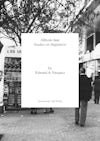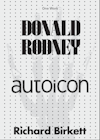Content
Gordon Matta-Clark’s Conical Intersect (1975) was a torqued, spiralling ‘cut’ into two derelict seventeenth-century Paris buildings adjacent to the construction site of the Centre Pompidou. With this landmark work of ‘anarchitecture’, Matta-Clark opened up these venerable residences to light and air, and began a dialogue about the nature of urban development and the public role of art. Considered today, Conical Intersect reveals the multivalent nature of the artist’s practice and his prescient focus on sustainability and creative reuse of the built environment.
In this book, Bruce Jenkins examines Matta-Clark’s ‘non-u-ment’, looking closely at the artist’s proposals, working process, various forms of documentation, and the dialogue begun by Matta-Clark’s decision to transform two abandoned buildings into an ‘act of communication’. The text is accompanied by rarely seen photographs of the construction process taken by French artist Marc Petitjean.




